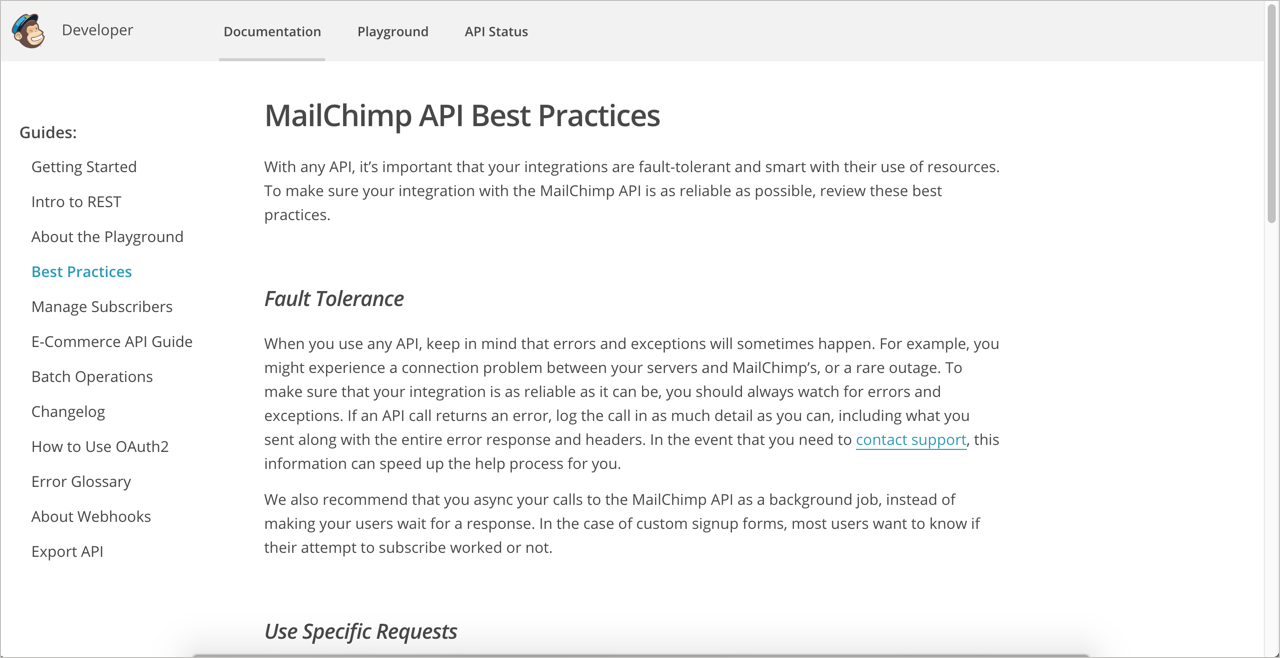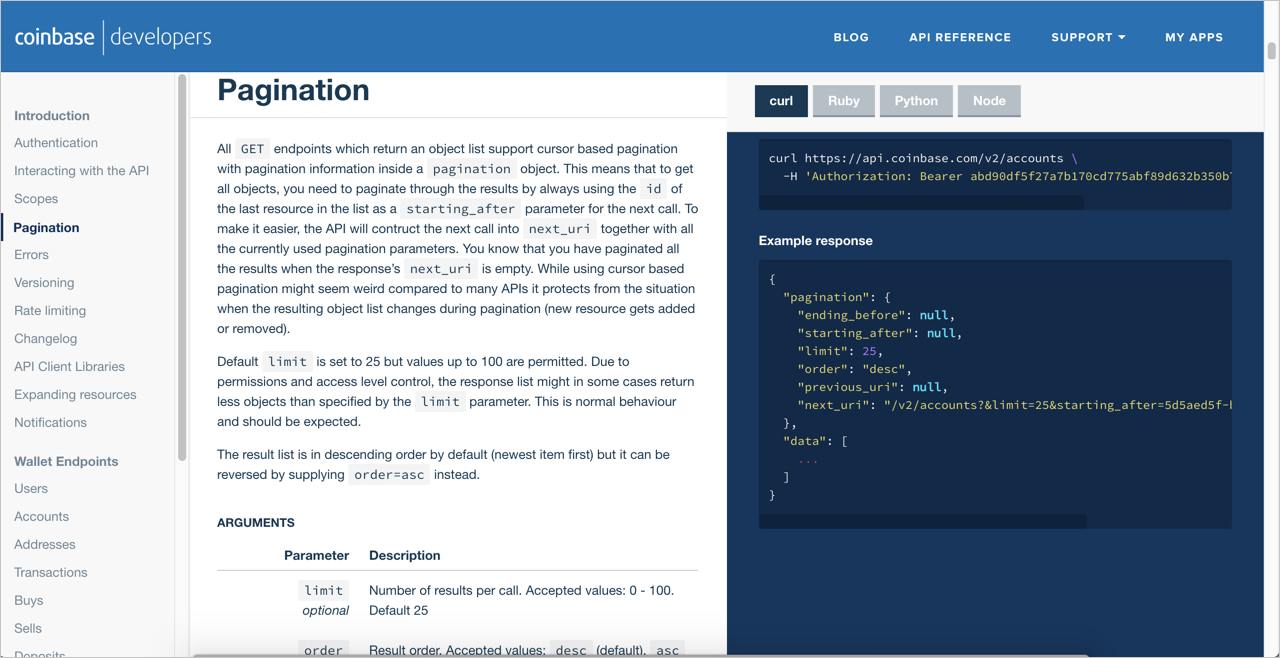API best practices
API best practices can refer to any general advice your product team wants to communicate to developers about working with the API. There aren’t any set number of topics typically covered in API best practices. Instead, the best practices can be a catch-all title for content that doesn’t fit anywhere else.
What topics to include in best practices
Although many of the topics in API documentation are standard, there will usually be a laundry list of things to know about working with the API. You can only probably get this information by asking the developers.
The list of topics might include topics such as the following: pagination, time ranges, fault tolerance, cache values, connectivity, timeouts, downtime, SSL, versions, testing and validation, exports, languages, number handling, expanding resources, notifications, CORS, localization, and more.

Sample API best practices
The following are API best practices from several API documentation sites.
Mailchimp

Mailchimp’s API best practices include tips about fault tolerance, using specific requests, authentication, cache values, connectivity, and registration. With fault tolerance, Mailchimp reminds developers that outages sometimes happen, so they should plan to handle scenarios accordingly if the API doesn’t respond. With specific requests, Mailchimp warns users about the time it can take if the request is too general and hence returns too much information.
Coinbase

Coinbase doesn’t specifically refer to these topics as best practices; instead, the navigation shows a laundry list of topics. Pagination is one of these topics worth expanding on here. How does pagination relate to APIs? Suppose your API endpoint returns all items in a user account. There could be thousands of items, and if all items were returned in the same response, it might take a long time for the API to gather and return the large amount of data. As a result, just like with searches on Google, the response returns a limited set, such as the first ten items, and then includes a URL that you can use to go to the next set of responses. Pagination refers to advancing to the next page of responses.
Earlier, when defining the characteristics of REST, I mentioned HATEOS, or “Hypermedia as the Engine of Application State.” Links in responses that return more results is one example of HATEOS.
Programmatically handling the URL to get more responses can be kind of tricky. If you want to get all items returned and then filter and sort the items, looking for specific values to pull out, how would you do this using the URL returned in the response? Your team might have some advice for developers handling these scenarios. Most likely, the endpoint would offer filters as parameters to apply to the endpoint, so that the initial response would contain the item set you wanted. This kind of advice might be appropriate in API best practices.
Activity with best practices
With the open-source project you identified, identify any API best practices type of content. Then answer the following questions:
- Are there best practices for working with the API that don’t fit in any other typical API topics?
- How are best practices organized in the existing documentation? Are they randomly listed in an FAQ?
- What actual topics are covered in the best practices?
- Are there issues logged against the project that should be covered in the API best practices?
About Tom Johnson

I'm an API technical writer based in the Seattle area. On this blog, I write about topics related to technical writing and communication — such as software documentation, API documentation, AI, information architecture, content strategy, writing processes, plain language, tech comm careers, and more. Check out my API documentation course if you're looking for more info about documenting APIs. Or see my posts on AI and AI course section for more on the latest in AI and tech comm.
If you're a technical writer and want to keep on top of the latest trends in the tech comm, be sure to subscribe to email updates below. You can also learn more about me or contact me. Finally, note that the opinions I express on my blog are my own points of view, not that of my employer.
76/167 pages complete. Only 91 more pages to go.
